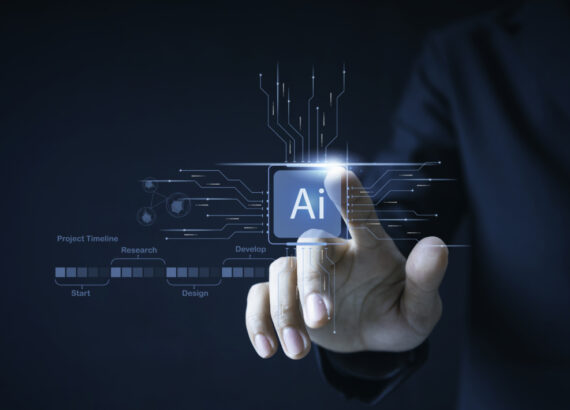ChatGPT vs Human Interactions: Pros and Cons of AI-powered Conversations
One prominent application of AI is in the realm of conversational agents, where AI-powered systems, such as ChatGPT, have emerged to engage in human-like conversations. These AI-powered ChatGPT vs Human Interactions conversational agents offer numerous benefits, including efficiency, scalability, and accessibility. However, they also come with limitations, such as a lack of empathy and an inability to understand complex contexts. This article delves into the pros and cons of AI-powered conversations, comparing them to human interactions.
By examining the advantages and limitations of both approaches, we aim to shed light on how AI and human interactions can coexist, addressing the ethical considerations and finding the optimal balance to navigate the future of conversational experiences.
1. Introduction: The rise of AI-powered conversational agents
1.1 Understanding the evolution of AI-powered conversational agents
AI-powered conversational agents have become increasingly prevalent in our daily interactions. From customer support chats to virtual assistants, these AI-driven systems have revolutionized the way we engage with technology. But how do they compare to good old-fashioned human interactions? Let’s delve into the pros and cons of AI-powered conversations and explore the benefits and limitations of these cutting-edge technologies.
2. Advantages of ChatGPT: Efficiency, scalability, and accessibility
2.1 Enhanced efficiency in customer support and service
One of the notable advantages of using ChatGPT, an AI-powered conversational agent, is its efficiency in providing customer support and service. Unlike human agents who may be limited by time constraints or availability, ChatGPT can handle multiple queries simultaneously, minimizing wait times and ensuring prompt responses. With its ability to process and deliver information rapidly, ChatGPT can significantly enhance the customer experience in terms of speed and efficiency.
2.2 Scalability and cost-effectiveness in handling large volumes of queries
Another strength of ChatGPT lies in its scalability and cost-effectiveness. As the volume of queries increases, AI-powered systems like ChatGPT can effortlessly handle the load without the need for additional human resources. This scalability not only reduces costs but also ensures that each customer receives timely assistance, even during peak periods. By leveraging AI, businesses can optimize their operations, efficiently catering to customer demands without compromising quality.
2.3 Improved accessibility for individuals with special needs
AI-powered conversational agents like ChatGPT have made significant strides in improving accessibility for individuals with special needs. These systems can provide personalized assistance to people with visual impairments, hearing disabilities, or other challenges, ensuring equal access to information and services. With customizable interfaces and voice-based interactions, ChatGPT enables a more inclusive and accessible user experience, empowering individuals to engage with technology on their terms.
3. Limitations of ChatGPT: Lack of empathy, inability to understand complex contexts
3.1 Challenges with empathetic responses and emotional understanding
While ChatGPT excels in many areas, it falls short in terms of emotional intelligence. Unlike humans, who can empathize and provide compassionate responses, AI-powered conversational agents like ChatGPT cannot fully comprehend emotions and offer genuine empathy. This limitation can be particularly noticeable in situations that require sensitive or nuanced discussions.
3.2 Difficulties in comprehending nuanced and ambiguous queries
Complex contexts and ambiguous queries pose another challenge for ChatGPT. AI systems often struggle to decipher the intricacies of language and context, potentially leading to misunderstandings or incomplete responses. While ChatGPT can handle straightforward inquiries effectively, it might falter when faced with intricate or convoluted questions that require a deeper understanding of the subject matter.
4. Benefits of human interactions: Emotional intelligence and nuanced understanding
4.1 The power of human empathy in building connections
One area where human interactions shine is emotional intelligence. Humans possess the innate ability to empathize, understand, and connect on an emotional level. This interpersonal skill allows for deeper connections and more meaningful conversations. Whether it’s providing comfort during difficult times or offering genuine advice, human interactions offer a level of understanding and compassion that AI-powered conversational agents struggle to replicate.
4.2 Ability to grasp complex contexts and provide contextualized responses
Humans have an extraordinary talent for grasping complex contexts and providing tailored contextualized responses. Unlike ChatGPT, which relies on pattern recognition and pre-trained data, human beings can draw from their experiences, knowledge, and intuition to truly understand the intricacies of a situation. This enables them to offer nuanced responses and adapt their communication style to suit the specific needs and preferences of the individual they are interacting with.
In conclusion, while AI-powered conversational agents like ChatGPT bring efficiency, scalability, and accessibility to our interactions, they still have limitations when it comes to empathy and understanding complex contexts. Human interactions, on the other hand, excel in emotional intelligence and the ability to grasp intricate nuances. Striking a balance between AI-powered conversations and human interactions can offer the best of both worlds, harnessing the strengths of each to create more meaningful and effective communication experiences. So, next time you need assistance or a good chat, consider the pros and cons of both options and decide what suits your needs best.

5. Challenges of human interactions: Time constraints and potential bias
5.1 Time Limitations for human responses in high-demand Situations
Human interactions, as much as we love them, come with their fair share of challenges. One such challenge is the time constraints we face in high-demand situations. When there’s a flood of queries pouring in, it becomes nearly impossible for humans to respond promptly to every one. We can only type so fast, after all. This often leads to frustrated users waiting for a response, which is not an ideal situation for anyone involved.
5.2 Addressing potential biases and subjective perspectives in human interactions
Another challenge of human interactions is the potential for biases and subjective perspectives to influence the conversation. Humans are not immune to biases, no matter how well-intentioned they may be. We all have our own experiences and beliefs that inevitably shape the way we communicate. While this can bring diversity to conversations, it can also result in unfair treatment or exclusion of certain perspectives.
6. Ethical considerations: Privacy, data security, and algorithmic biases
6.1 Safeguarding user privacy and ensuring data security
When it comes to technology, ethical considerations are of utmost importance. With AI-powered conversations, privacy and data security become focal points. Users need assurance that their personal information isn’t being mishandled or misused. It’s essential to implement robust safeguards to protect user privacy and ensure data security throughout the conversation process.
6.2 Mitigating algorithmic biases and ensuring fairness in AI interactions
Algorithms, while powerful, are not immune to biases either. AI systems learn from vast amounts of data, which can sometimes contain biases present in society. This means that AI-powered conversations can unwittingly perpetuate unfair treatment or discrimination. It is crucial to have mechanisms in place to identify and mitigate algorithmic biases, ensuring that AI interactions are fair and unbiased.
7. Finding the right balance: Integrating AI and human interactions for optimal results
7.1 Identifying use cases where AI excels and others where human interactions are essential
Instead of viewing AI and human interactions as competing forces, it’s more productive to see them as complementary. There are certain use cases where AI excels, such as providing quick and accurate information, while there are other situations where human interactions are irreplaceable, like providing empathy and understanding. Identifying these distinct use cases is key to finding the right balance and maximizing the benefits of both AI and human interactions.
7.2 Designing hybrid systems that combine the strengths of AI and human interactions
To optimize conversational experiences, it’s crucial to design hybrid systems that leverage the strengths of both AI and human interactions. By combining the efficiency and scalability of AI with the empathy and nuanced understanding of humans, we can provide users with seamless and satisfactory experiences. This involves thoughtful integration, where AI assists humans and humans oversee AI, creating a harmony that caters to the diverse needs of users.
8. Navigating the future of conversational experiences
As we navigate the future of conversational experiences, it is essential to acknowledge the challenges and ethical considerations that come with AI-powered conversations. While time constraints and potential bias pose challenges in human interactions, they too can be addressed. By prioritizing user privacy, mitigating algorithmic biases, and embracing a hybrid approach, we can create conversational experiences that are efficient, unbiased, and tailored to individual needs. The key lies in striking a balance between AI and human interactions, ensuring that technology enhances rather than replaces the essence of human connection. So, let’s embrace AI and human collaboration to shape a conversational future that is as intelligent as it is empathetic.
9. Conclusion
As AI-powered conversational agents like ChatGPT continue to advance, it is crucial to recognize their strengths and limitations in comparison to human interactions. While AI offers efficiency, scalability, and accessibility, it falls short in areas such as empathy and understanding complex contexts.
Human interactions, on the other hand, excel in emotional intelligence and nuanced understanding. Rather than viewing AI and human interactions as competing forces, we should strive to integrate them effectively. By finding the right balance and leveraging the strengths of both approaches, we can create conversational experiences that are efficient, empathetic, and tailored to the diverse needs of users. Navigating this future requires careful consideration of ethical considerations, ensuring privacy, and data security, and addressing algorithmic biases. By doing so, we can shape a future where AI and human interactions coexist harmoniously, enhancing the way we communicate and engage with technology.
FAQ
1. Can AI-powered conversational agents completely replace human interactions?
No, AI-powered conversational agents cannot completely replace human interactions. While they offer efficiency and scalability, they lack the emotional intelligence and nuanced understanding that humans possess. Human interactions are crucial for empathy and comprehending complex contexts. However, a combination of AI and human interactions can create optimal conversational experiences.
2. Are AI-powered conversational agents capable of understanding and responding to all types of queries?
AI-powered conversational agents like ChatGPT have limitations in understanding and responding to all types of queries. They may struggle with ambiguous or nuanced queries, and their responses can be influenced by the data they were trained on. Humans, on the other hand, excel in addressing complex queries and providing contextualized responses based on their understanding and experiences.
3. How can we ensure ethical considerations in AI-powered conversational experiences?
Ensuring ethical considerations in AI-powered conversational experiences requires attention to privacy, data security, and algorithmic biases. It is important to protect user privacy and secure their data during interactions. Additionally, efforts should be made to mitigate algorithmic biases that can lead to unfair or discriminatory responses. Transparency and accountability in the development and deployment of AI systems are essential to address these ethical concerns.
Thank you for reading 🙂
If you want to build your website at an affordable price contact: www.nextr.in
Read this: How To Become A Web Developer?














